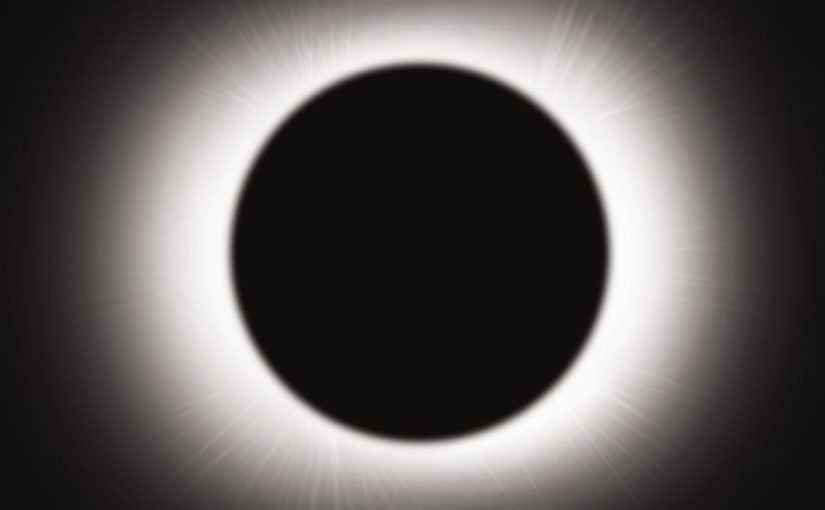Students, faculty and other members of the community gathered at 11:45 a.m. Monday outside the South Engineering building to watch the solar eclipse.
North Dakota State’s department of physics provided 50 safety glasses — and tunes from Pink Floyd’s “Dark Side of the Moon” — for the event to make viewing equal parts safe and fun.
The glasses looked like something you’d be handed after buying tickets to a 3D movie, but with different lenses.
Instead of the typical head-ache inducing blue and red lenses, shimmering silver metallic lenses were in their place. The lenses are a thin metal coating, “mostly consisting of silver and aluminum,” Vijay Shah, a graduate student studying physics, said.
The glasses are necessary to prevent onlookers from frying and destroying their retinas from the sun’s harmful rays. When looking through the glasses without staring at the sun, the wearer sees nothing but gray.
Anticipation mounted as the glasses were passed around the crowd and the moon appeared to slowly crawl across the sun’s surface from right to left.
Spectators experienced roughly 80% (peak for the Fargo-Moorhead area) by 1 p.m., resulting in the what was roughly the shape of the crescent moon to partially cover the sun.
A solar eclipse occurs when the moon’s orbit crosses directly between the Earth and the sun. The area that the moon’s shadow during a total solar eclipse is directly cast upon is known as the umbra. The area that the moon’s shadow is indirectly cast upon is known as the penumbra.
The length of land mass that the umbra crosses is referred to as the path of totality. Fifteen states were included the path of totality — stretching from Oregon to South Carolina — marking it the first coast to coast solar eclipse of the continental United States in 99 years.
Experiencing the eclipse in the path of totality is vastly different than what viewers experienced in Fargo. “At that moment, everything becomes twilight. And the temperature drops by…10 degrees Fahrenheit,” Sylvio May, chair of NDSU’s department of physics, said.
“All people stop talking, birds stop making noise. It’s impressive,” May said.
If we are lucky enough to still be around on September 14, 2099, the solar eclipse’s path of totality will pass straight through Fargo.
May also described the disparity between seeing 99 and 100 percent as being, “as much as when you look at the Grand Canyon on the picture, and then you see it in life. That’s the difference.”
The first documentations of an eclipse are roughly 5,000 years old and include recollections and myths about the event. Later documentations of solar eclipses include predictions and even poems.
“There is nothing beyond hope, nothing that can be sworn impossible, nothing wonderful, since Zeus, father of the Olympians, made night from mid-day, hiding the light of the shining Sun, and sore fear came upon men,” wrote the Greek poet Archilochus of the April 6, 647 B.C. eclipse.
The same feeling of mystification and power were felt Monday as viewers saw this cosmic phenomenon. “It’s fascinating to see what other cultures saw as a deity eaten away,” Shah said.
